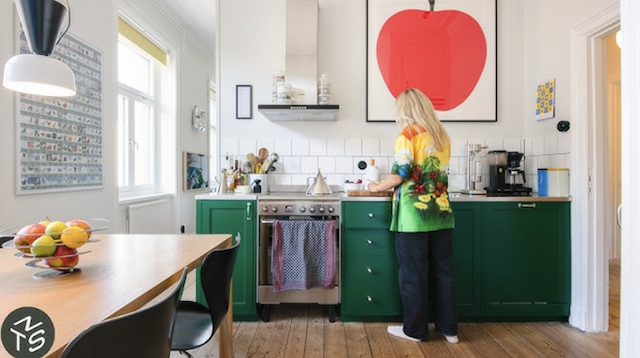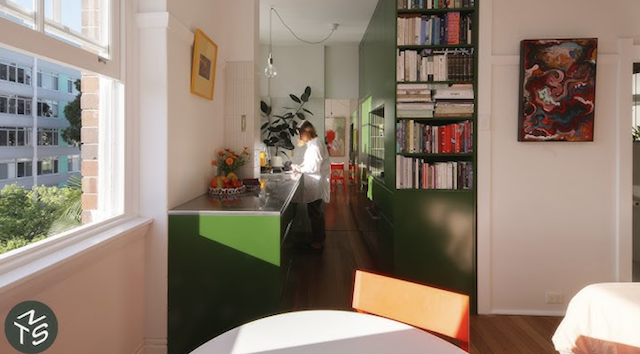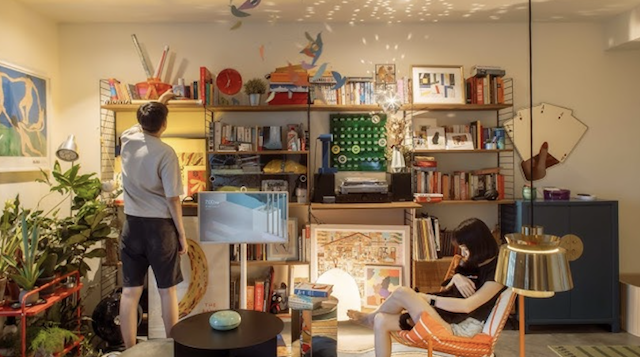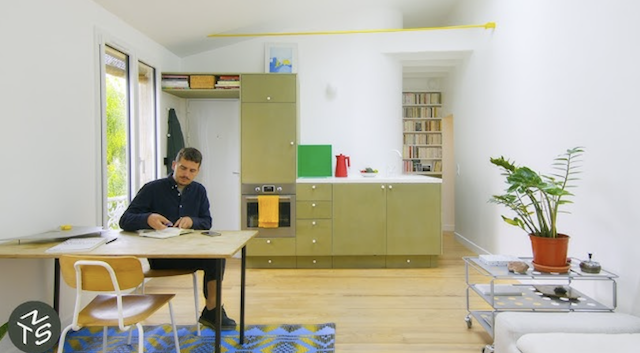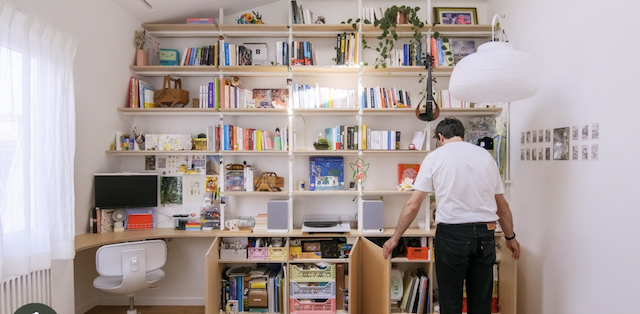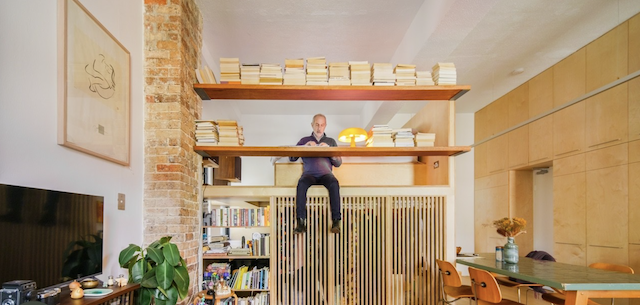
Design Unleashed: How a Visionary Renovation Transformed a 538 Sq. Ft. Sydney Apartment into a Masterpiece of Compact Living
Prepare to rethink everything you thought possible about small-space living. We’re pulling back the curtain on an extraordinary Sydney apartment transformation that proves ingenuity, meticulous planning, and a ‘do more with less’ philosophy can unlock truly breathtaking potential in just 538 square feet. This isn’t just a renovation; it’s a masterclass in maximizing every inch, curated by architect Ed Litman, founder of Litman Partnership, for his son, Mitch, a professional chef.
The Vision: From “Pokey and Dark” to a Breath of Designed Air
Nestled in Darling, a vibrant inner-city Sydney neighborhood brimming with restaurants and shops, this apartment, originally a Reader’s Digest warehouse, presented a unique opportunity with its impressive 3.6-meter (nearly 12-foot) ceiling height. Yet, it began as “pokey and dark,” burdened by outdated fixtures, a cramped bedroom, and a suffocating galley kitchen. Litman’s guiding principle was clear: to find the “most simple practical and high performance solution” where there’s “no room for extravagance” but every need for the space to be “livable and delightful”. The design goal was simple: “do more with less”. The apartment’s initial state was stripped back, revealing its original structure and adopting a clean, warm palette primarily of timber and white, designed to amplify perceived space and introduce warmth.
The Game-Changer: Elevating the Experience with a Lofted Sanctuary
The single most impactful design decision was elevating the loft bed. This move wasn’t just about creating a sleeping area; it was about unlocking significant usable floor area below, transforming previously dead space into highly functional zones.
Optimized Headroom: Crucially, the design ensures ample headroom to walk comfortably under the mattress, a detail often overlooked in compact designs. The mattress itself is thoughtfully raised above its plywood platform, not only making bed access easier but also creating that vital clearance below.
Integrated Living & Work: This elevated “undercroft” brilliantly houses a clothing wardrobe and a perfectly placed desk by a window, forming a private study nook that evokes the cozy intimacy of a “caravan or a boat”. Additional integrated storage for shoes, jumpers, and knitwear ensures no space is wasted.
Precision & Sustainability: The entire bed structure – including the floor, bed base, and under-cupboards – is meticulously crafted from plywood, a sustainable material chosen not just for its beauty but also because it “smells nice”. It was precisely prefabricated off-site in a joiner’s workshop, then seamlessly assembled on location, ensuring exact fit despite the old building’s uneven floors and ceilings.
Open Yet Defined: The lofted bedroom dynamically overlooks the living room, fostering a “grand and luxurious” feel and encouraging engagement with activities downstairs. Yet, an artful barrier of large timber shelves provides a clever screen, doubles as a desk for reading or writing from the loft floor, and ingeniously integrates the existing window to filter natural light down to the desk below.
The Heart of the Home: A Chef’s Bespoke Kitchen
Given Mitch’s profession, a professional-grade kitchen was a non-negotiable priority. Litman delivered a space that is not only highly functional but also a testament to custom design:
Seamless Integration: The kitchen is seamlessly incorporated into a floor-to-ceiling storage wall, meticulously maximizing every vertical inch. Its bespoke design brilliantly compensates for the old building’s inherent unevenness, showcasing precision joinery that emphasizes clean horizontal lines, adding visual beauty.
Pro-Grade & Practical: Mitch’s culinary demands dictated a stainless steel bench, a durable and practical choice for a chef. The design features deep, wide drawers, recognized as far more practical for access than narrow ones, making organization a breeze. Even the gas cooktop was a savvy salvage from a friend’s renovation, highlighting resourcefulness.
Spatial Illusion: A mirrored splashback isn’t just a stylish touch; it’s a brilliant strategic small-space hack. It intelligently bounces light, making the entire room feel larger, and cleverly allows Mitch to maintain visual contact with guests even while cooking with his back turned.
Seamless Integration & Smart Details: Every Inch Counts
The intelligent layout begins at the entry: stepping through the integrated storage wall, the bathroom is to the right, the loft bed and stairs immediately visible, and the living room just beyond.
Minimalist Core: The living area embraces a stripped-back aesthetic, exposing original beams and walls, using a simple palette of white and timber to maximize spatial perception and create warmth.
Curated Furnishing: Mitch himself curated the living area with secondhand, eclectic pieces sourced from online marketplaces, adding personal character.
Calculated Illumination: An aluminum uplight serves more than just ambiance; it’s a calculated move to cast light upward, actively creating an enhanced sense of space and guiding the eye through the room, integrating with the joinery as a “service zone”.
Controlled Openness: Thoughtful shelving between the living room and study creates “permeability and transparency”. Even the wardrobe avoids complete enclosure, using a timber screen to imply a separate zone while maintaining an open, flexible feel. Storage cubicles under the stairs offer dedicated space for shoes, jumpers, and knitwear, ensuring no space is wasted. The apartment is designed primarily for one person, or possibly a partner, meaning privacy requirements are minimal, allowing for a “luxurious” feel due to the “one big volume”.
Sustainable Choice: This transformative conversion of an existing warehouse stands as a more sustainable approach than demolition and rebuilding. While the bathroom remains functional, it awaits future renovation.
This Sydney apartment isn’t merely a home; it’s a blueprint for elevating urban living. It unequivocally proves that ingenious design and a “do more with less” philosophy can transform even the tightest quarters into highly functional, luxurious, and truly extraordinary spaces, demonstrating that good design “has to work a bit harder” in small footprints to ensure practicality, livability, and enjoyment.
